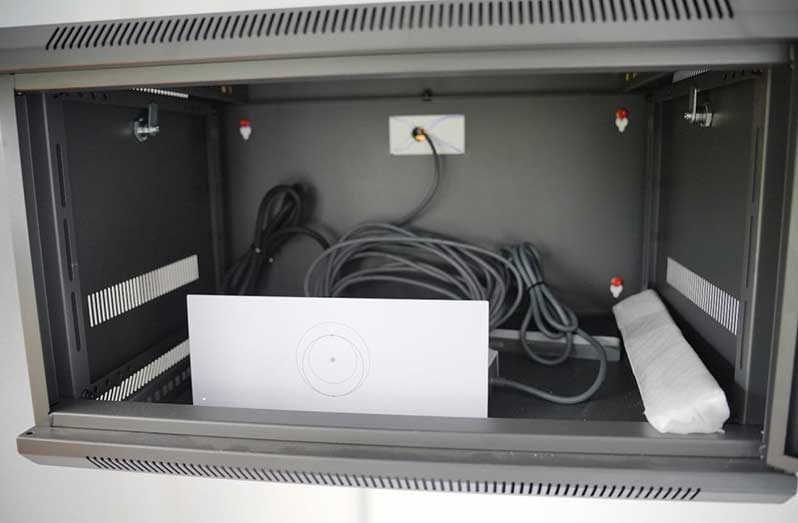–healthcare workers speak about the benefits
ACCESS to the internet is no longer seen as a luxury, but a necessity, especially today, when being connected to the Internet enables a person or group of persons to access educational, healthcare, economic and other opportunities that are beyond their physical surroundings.
The Office of the Prime Minister (OPM), facilitated through the National Data Management Authority (NDMA), is transitioning to a new high-speed Internet platform, utilising Low Earth Orbiting (LEO) satellite technology that will deliver connectivity at speeds of more than 20 times faster than the current megabytes per-second offered in the hinterland, remote and riverine communities.
This initiative was launched in July of this year, and has already established nearly 150 connections in several of these communities.
In an informative video posted by the Office of the Prime Minister, it was revealed that this initiative is expected to transform public spaces in more than 200 hinterland and riverine communities by the end of this year by providing unparalleled Internet access to areas that have faced significant challenges in obtaining reliable connection.
Some of the designated hubs/public spaces facilitating this initiative include: Karawab, Pakera District Hospital, and Kabakaburi Hospital.
A representative from each of these spaces spoke to the Office of the Prime Minister on how this gesture has already improved their lives.
Trecia Domingo, a Nurse at Karawab said: “Before now, we used to be running around in the yard with our phone in our hand and, we used to be late and so on with our work due to the bad signal and internet connection as well. So, now we can be comfortable in our chair, do our work, and send out our report.”
To show the difference, Domingo highlighted that at present, she is completing an online training in the Nursing Assistant programme. The woman related that she has benefitted greatly from this initiative thus far.
Before the high-speed internet, she recalled the many challenges and difficulties she faced including the back-and-forth connection to classes, inability to hear clearly what is being said or asked of her and much more.
Now, she is able to sit in a building in her community and join her classes online to secure a better, brighter future for herself.
Dr. Udochukwu Amadi of the Pakera District Hospital in Matthew’s Ridge, Region One, said that this high-speed internet will now enable them to deliver their telemedicine capabilities to health centres around the region.
“It’s also going to be very helpful to the staff currently undergoing online training, (the GOAL programme), providing reliable internet for them as well,” he remarked.
He explained this development is an excellent one at the Pakera District Hospital and they welcome it wholeheartedly.
Meanwhile, Natuisha Harris, a health worker at the Kabakaburi Health Centre, said that this initiative is a great one as it provides better WiFi connectivity to those persons who need it most.
“A lot of times I would know, the nurses would say, oh they have to put on internet, to send out reports and it (the high speed) make it more easier,” she said.
She pointed out that this allows nurses to save money or place it elsewhere instead of having to pay for service on their phones.
The Government of Guyana’s pledge to bridge the digital divide is rooted in recognising the disparities between coastal and hinterland communities.
The OPM on Friday stated that Prime Minister, Brigadier (Ret’d) Mark Phillips said: “Access to reliable internet connectivity is crucial for accessing vital services, improving education outcomes, and fostering economic opportunities”.



.jpg)








